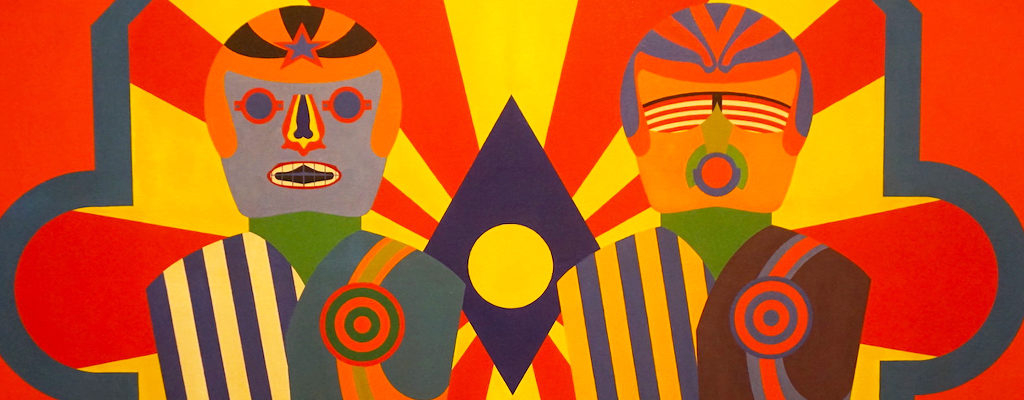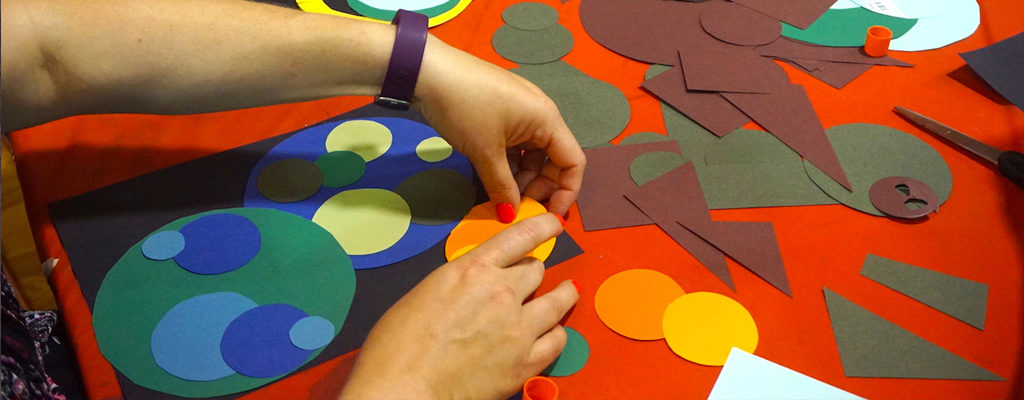
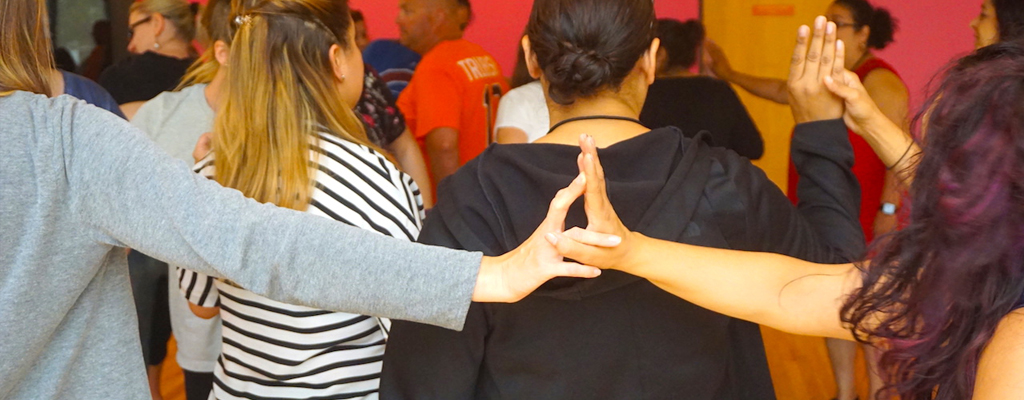
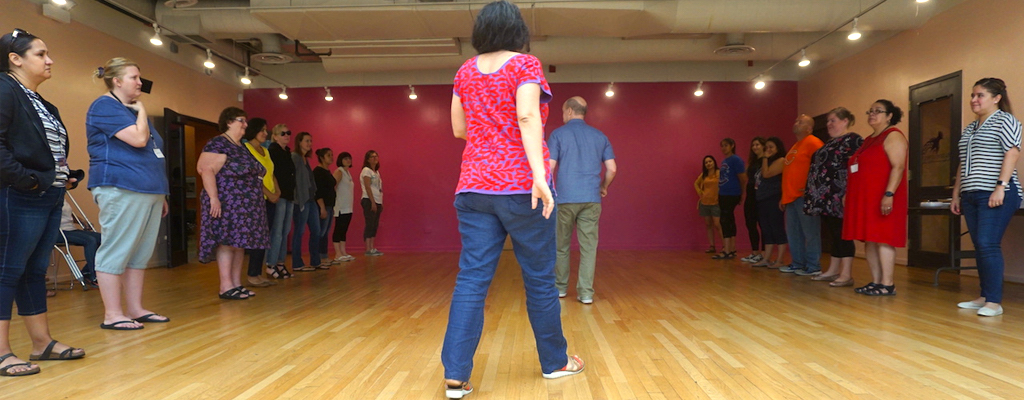
Kurt and Marimar lead us through a series of connecting and transforming activities.

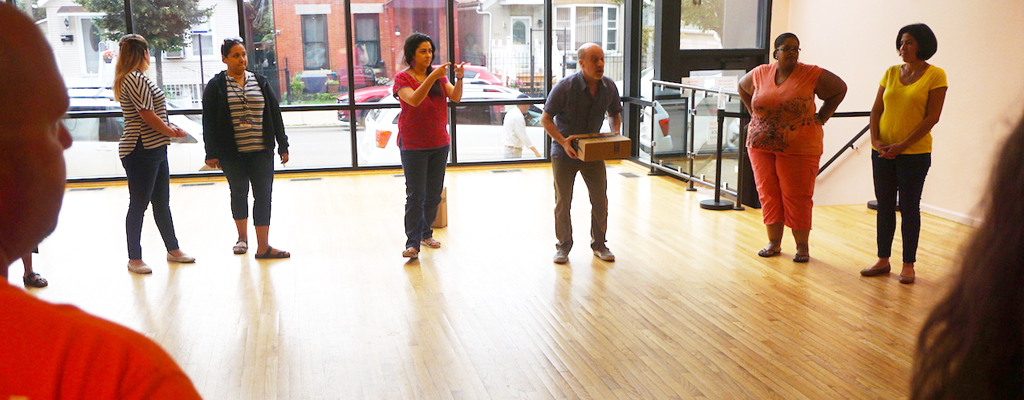
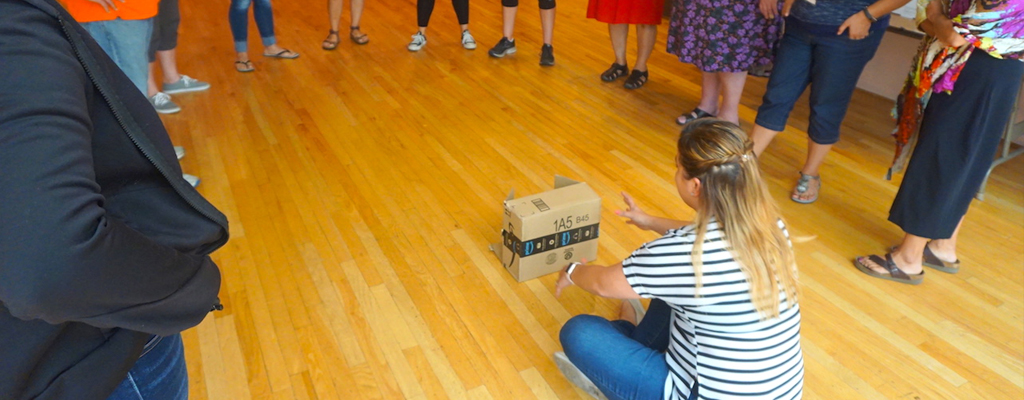
We passed a cardboard box around, transforming it through our interactions with it into a football, a television set, etc. – into just about anything that was not a box.
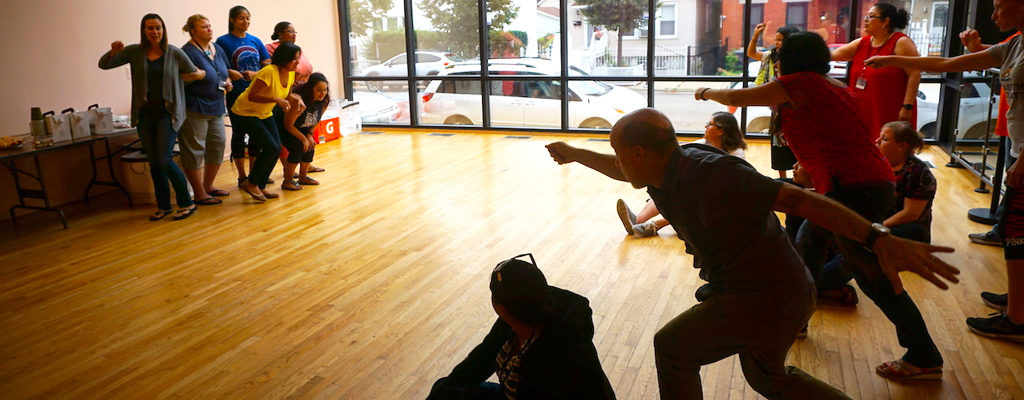
We played a hilarious physical transformation version of rock-paper-scissors, in which we competed with our peers to determine who will evolve from an egg into a chicken and a chicken into a dinosaur, and who will devolve backwards.
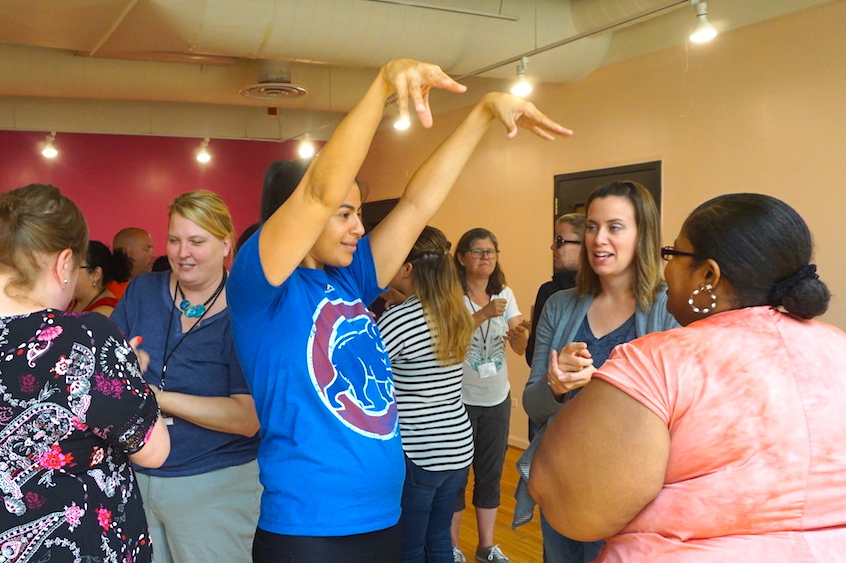
We broke into small groups, and using our bodies, each group became a windmill that transformed into a giant.
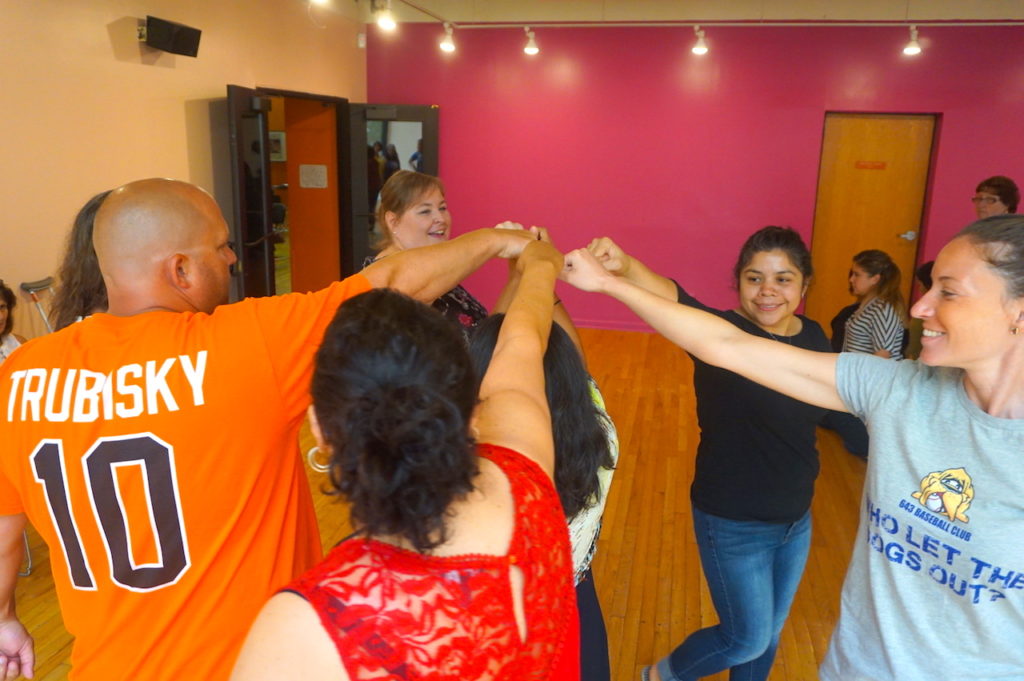
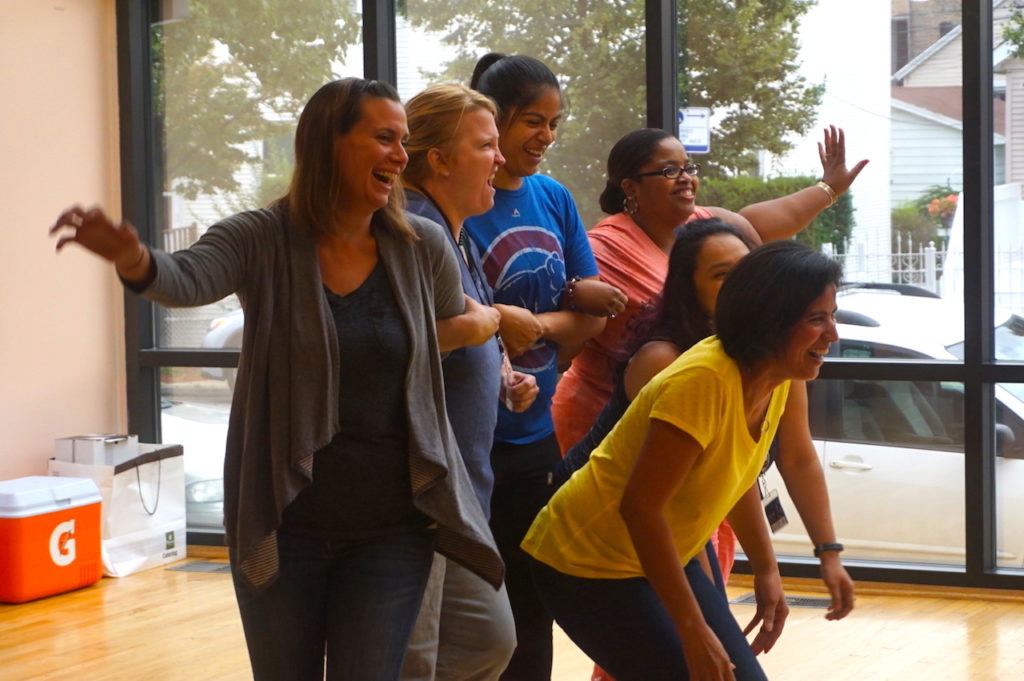
TRIO READER’S THEATRE
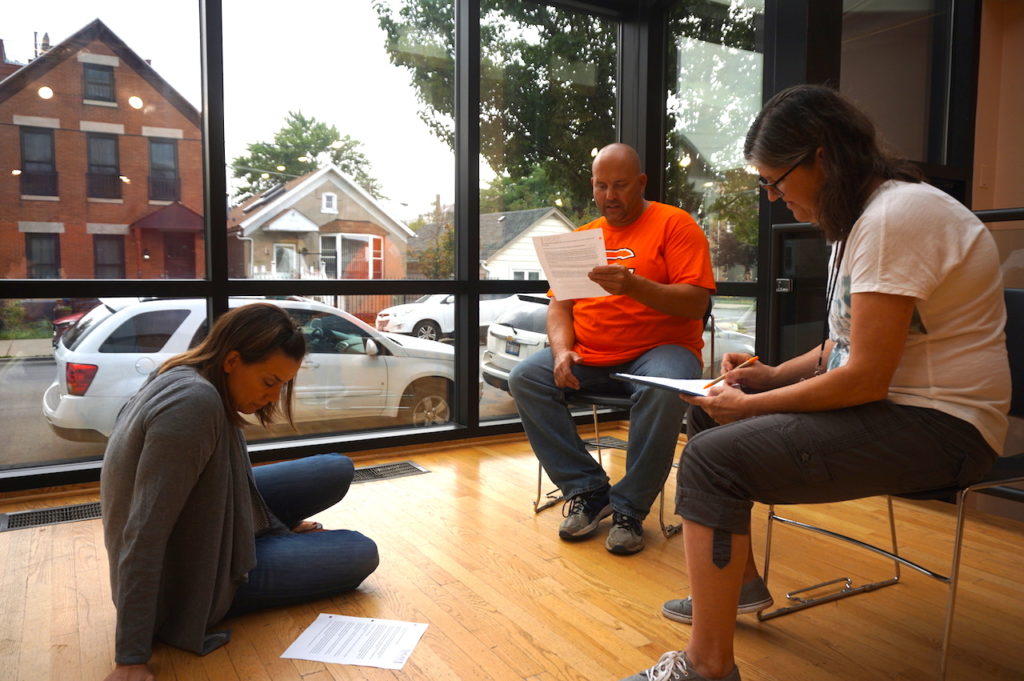
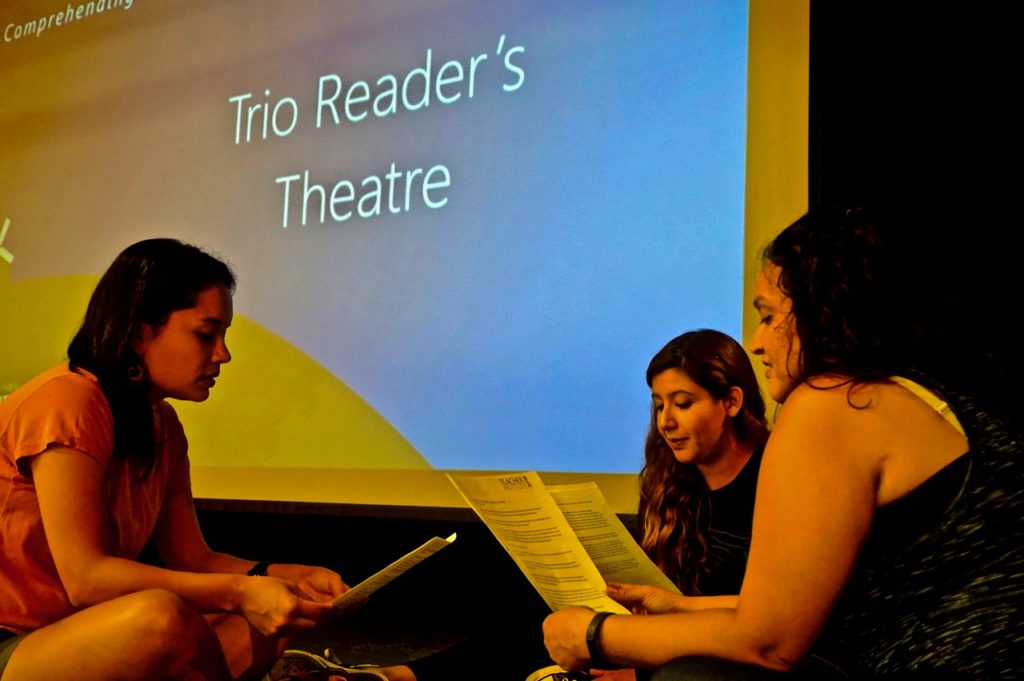
In groups of three we read Chapter 8 (where Don Quixote encounters windmills that he perceives as giants) out loud for each other as reader’s theater. One of us in each trio read the narration lines, another read Don Quixote’s lines, and the third read Sancho Panza’s lines.
Inspired by our artwork, we filled in this sentence:
Somewhere in ____ lived ________
who ____________________
We passed our artwork to two partners at our table, and we had them fill in the same sentence with their own responses to the work. Geometric shapes were transformed into “Somewhere Places”, which in turn were transformed into three different pieces of writing.
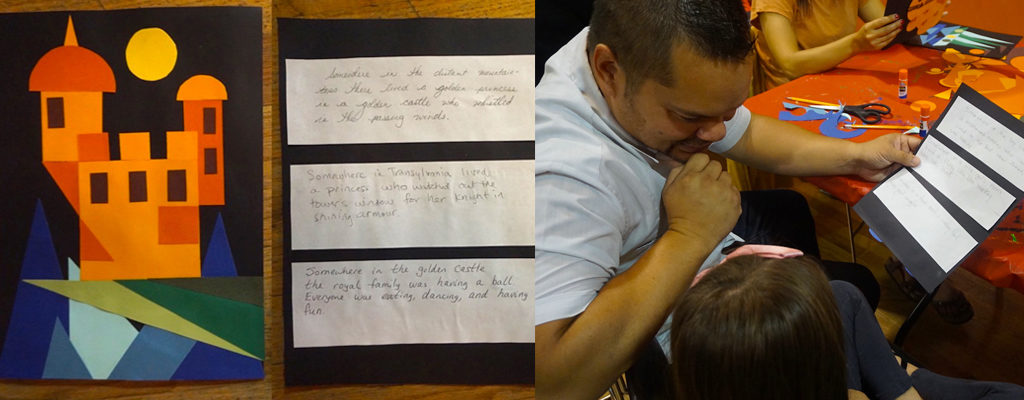
DON QUIXOTE TODAY…
Guest presenter Nick Rabkin shared an amazing video of young immigrants who are reading Don Quixote, finding resonance between their own lives and themes in the book, and writing and performing songs in response.
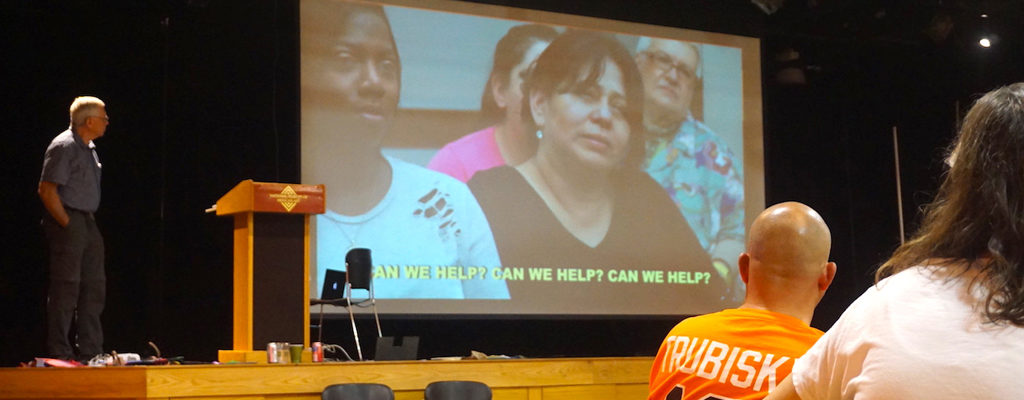
ARTE DISEÑO XICÁGO
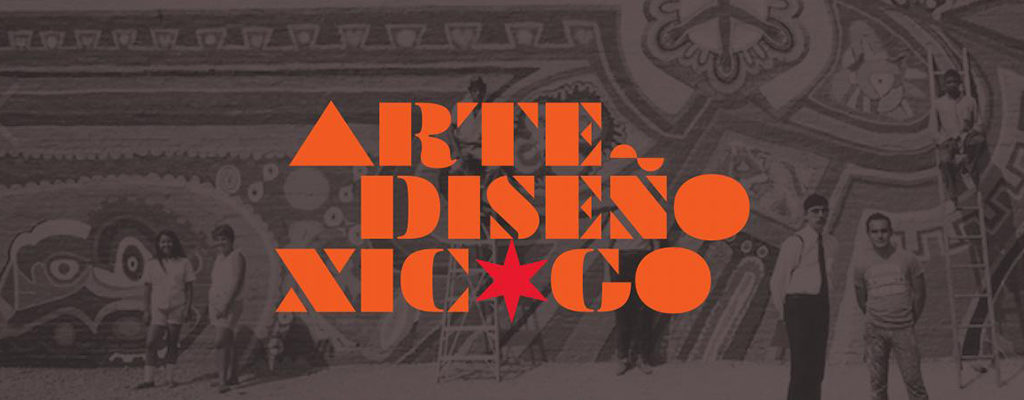
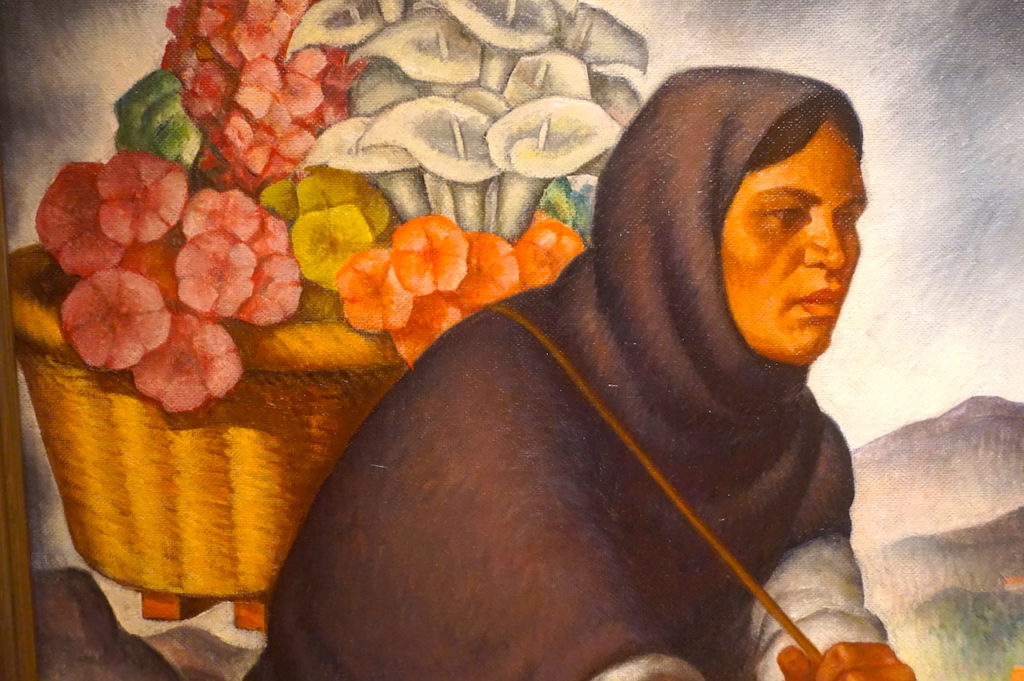
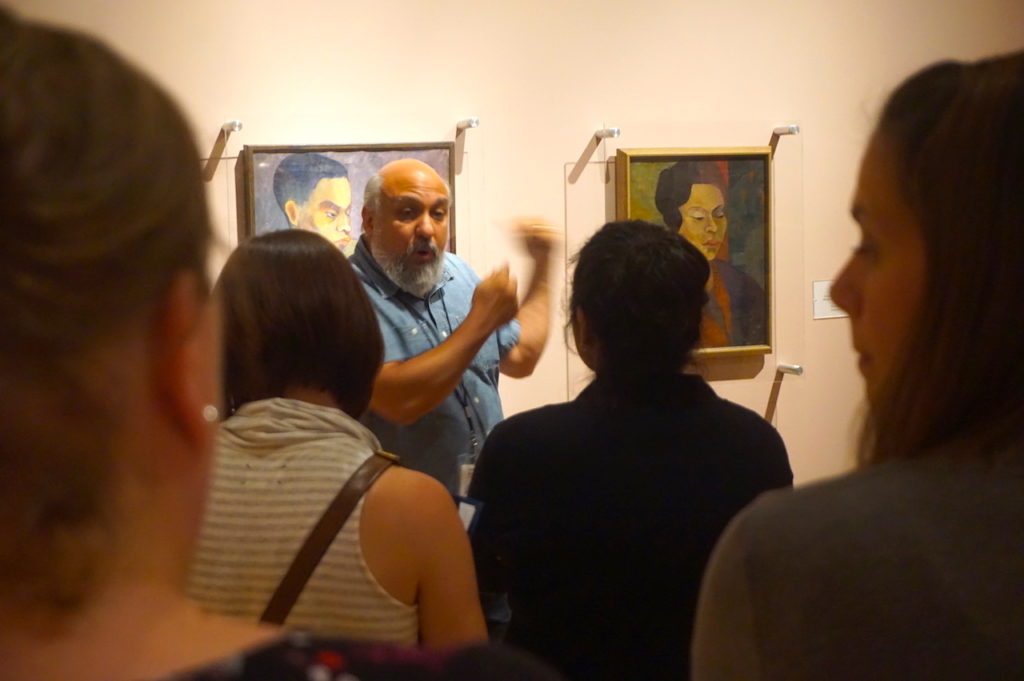
We were privileged to receive a private tour of the extraordinary exhibit Arte Diseño Xicágo (Art Design Chicago) by the curator of the show himself, Cesareo Moreno. This historic exhibition examined the early artistic involvement and influence of Mexican immigrants and artists in Chicago, including artwork, photographs and objects that concentrate on the years between the World’s Columbian Exposition (1893) and the Civil Rights Era of the 1970s.
A planning guide for exploring the wide variety of Stories contained within an artwork was shared with the participants.
“Stories” Guide:
